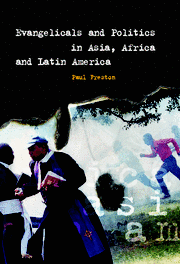PART FOUR - SPANISH-SPEAKING LATIN AMERICA
Published online by Cambridge University Press: 22 September 2009
Summary
GENERAL INTRODUCTION
Latin America falls in the medium range of Third World per-capita income levels – there are no tigers, but most countries are above all our African nations except South Africa. There is comparative cultural homogeneity, due to common Iberian colonisation, independence in the early nineteenth century (except for some Caribbean possessions), followed by economic dependence on Britain and later the United States.
‘Latin America’ is a French invention in the mid-nineteenth century, reflecting French aspiration for cultural (and even political) hegemony. The name is culturally but not ethnically justifiable. Anthropologist Darcy Ribeiro divides Latin America into three categories. The Witness Peoples are the modern representatives of ancient civilisations with which European expansion clashed, represented by countries where the Amerindian element is greatest: Guatemala, Bolivia, Peru, Ecuador, and to some extent Mexico. The New Peoples are a mix of disparate ethnic matrixes. Chile and Paraguay mix European and Amerindian elements; the African element is added in Brazil and Colombia. The Transplanted Peoples are overwhelmingly of European immigrants. Argentina and Uruguay are the main examples, but southern Brazil is also included (Ribeiro 1983: 58).
Decolonisation is a dim memory, unlike in Asia and Africa, and occurred in a different way, with criollo (native-born white) elites taking power and often still holding it. The nation-states are thus fairly solid and national identities secure, despite a recent rise in indigenous awareness in Andean and Mayan regions.
- Type
- Chapter
- Information
- Evangelicals and Politics in Asia, Africa and Latin America , pp. 191 - 196Publisher: Cambridge University PressPrint publication year: 2001
- 1
- Cited by



